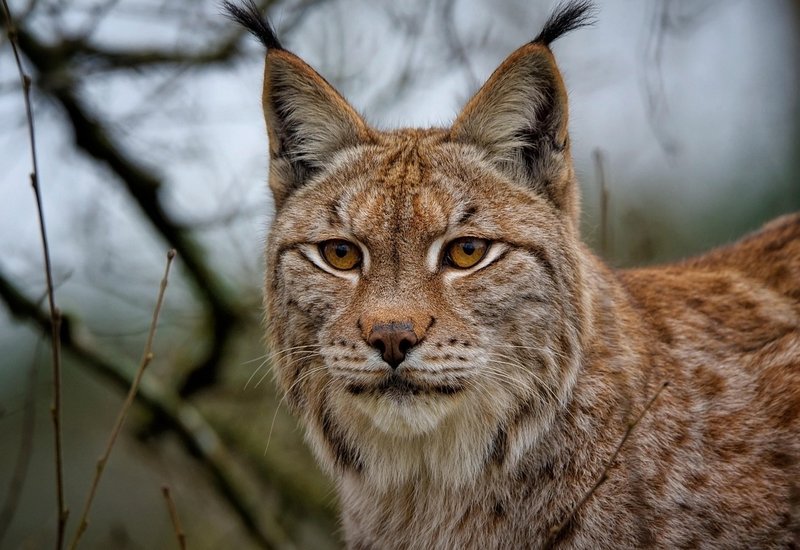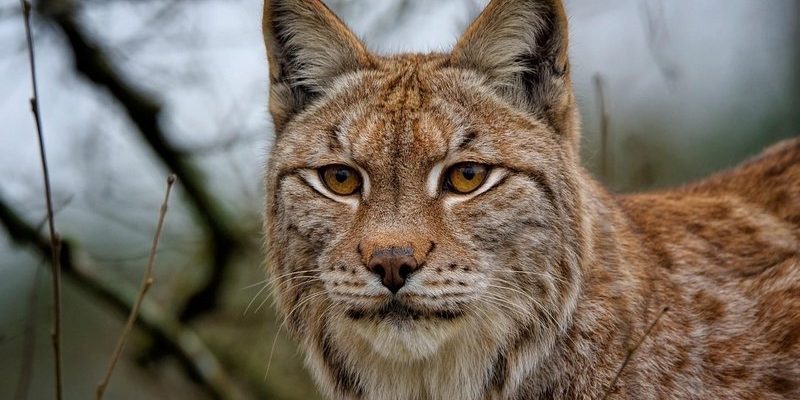
When talking about cognitive abilities and behavior, you might picture the classic animal behaviors: hunting, climbing trees, or perhaps evading predators. But there’s so much more beneath the surface. The Eurasian lynx has a unique set of skills that helps it survive in various habitats—from snowy mountains to dense forests. So, let’s dive deeper and explore what makes these beautiful creatures tick.
Understanding the Eurasian Lynx
The Eurasian lynx (*Lynx lynx*) is a magnificent creature found across Europe and Asia. Standing about 24 to 30 inches tall, with a body length of up to 49 inches, they are impressive not just in size but in their adaptability. Lynx have long legs, large paws, and a short tail with a distinctive black tip, which gives them a striking appearance and helps them navigate snowy terrains.
These cats are solitary animals, typically roaming large territories that can stretch over several hundred square kilometers. Their keen sense of sight and hearing is crucial for their hunting style. They primarily hunt at dawn and dusk, using their stealth and intelligence to stalk prey, which includes deer, hares, and birds.
For anyone keen on understanding the behavior of the Eurasian lynx, it’s worth noting that they are known for their territorial instincts. They use scent markings and vocalizations, like a soft bark or a yowl, to communicate with others and establish boundaries. This behavior is a mix of social interaction and survival strategy, showcasing their cleverness while navigating the challenges of their habitat.
Cognitive Skills and Problem Solving
When we talk about cognitive abilities, we’re often curious about how animals think and solve problems. The Eurasian lynx is no exception. These cats display a range of problem-solving skills, especially when it comes to hunting. For instance, they might spend hours tracking a lone deer, using their keen senses to assess the best approach.
Here’s the thing—lynx are not just instinctual hunters; they learn from their experiences. If a particular strategy doesn’t work, they can adapt and try another. This ability to adjust their tactics shows a level of intelligence that goes beyond mere instinct. Imagine spending hours waiting silently and then executing a flawless chase—a true testament to their cognitive prowess.
Moreover, studies have found that Eurasian lynx can remember locations of prey and recognize patterns in their movements. Just like we might remember shortcuts during a drive, lynx use their memory to optimize their hunting routes. This natural GPS ensures they maximize their chances of success.
Social Behavior and Communication
You might be surprised to learn that despite their solitary nature, Eurasian lynx have a rich social life—at least when it’s breeding season. During this time, males and females communicate through a series of vocalizations and scent markings. This behavior showcases their understanding of social cues and their ability to interact with others of their kind.
When it comes to raising their young, female lynx demonstrate strong maternal skills. They teach their kittens essential survival skills, like hunting and climbing. Just like parents guiding their children, these lynx mothers nurture and support their cubs until they can fend for themselves. This level of care reflects not just instinct but also an understanding of what their young will need to thrive in a competitive environment.
Interestingly, lynx also engage in a behavior called play fighting with their cubs. This isn’t just for fun; it helps the kittens develop important social and hunting skills. They learn how to attack, defend, and maneuver in their environment, all under the watchful eye of their mother.
Adaptability to Environments
One of the key traits of the Eurasian lynx is its ability to adapt to different habitats. From the snowy forests of Siberia to the rocky mountains of Central Europe, these cats are versatile. Their adaptability is a huge part of their survival strategy.
For example, in regions with heavy snowfall, lynx have developed larger paws that act like snowshoes, allowing them to traverse through deep snow easily. It’s like having the perfect hiking boots for winter conditions! This physical adaptation speaks volumes about their intelligence and ability to thrive in various environments.
In addition to physical adaptations, their hunting behavior changes with the environment. In forested areas, they may stalk deer more carefully due to the cover provided by trees, while in open landscapes, they might rely more on speed and stealth. These adjustments demonstrate an understanding of their surroundings and the challenges they face, showcasing a level of cognitive sophistication.
Impact of Human Activities on Lynx Intelligence
As with many wild animals, human activities can significantly impact the intelligence and behavior of Eurasian lynx. Habitat destruction, hunting, and road traffic can disrupt their natural behavior and cognitive development. When their environments change rapidly, these cats face new challenges that can affect their problem-solving abilities.
For instance, as urban areas expand and roads fragment their habitats, lynx may struggle to find food and maintain their territory. In some cases, they adapt by changing their hunting patterns or shifting to times of activity when humans are less present. This flexibility highlights their intelligence but also underscores the importance of conservation efforts to protect their habitats.
Moreover, when lynx come into contact with humans, their behavior can change. They might become more wary or cautious, which is a smart survival strategy. By observing how they’re impacted by human presence, researchers can gain insights into their cognitive functioning and adaptability in response to stressors.
Conservation Efforts and the Future of the Eurasian Lynx
Understanding the Eurasian lynx’s intelligence and behavior is crucial for conservation efforts. Several organizations are working to ensure that these magnificent animals not only survive but thrive in their natural habitats.
By studying their behaviors and cognitive abilities, researchers can tailor conservation strategies that mitigate human impact. For example, creating wildlife corridors allows lynx to move safely between habitats, reducing the risks associated with road crossings and habitat fragmentation. Just as we build bridges to overcome obstacles, these corridors help lynx navigate tougher landscapes.
Public awareness and education also play a vital role. The more we learn about these cats, the better positioned we are to advocate for their protection. By sharing stories of their intelligence and adaptability, we can inspire others to appreciate these beautiful creatures and support conservation initiatives.
In closing, the Eurasian lynx is not just a solitary hunter but a symbol of resilience and intelligence in the wild. Their cognitive abilities, social interactions, and adaptability paint a picture of a species that needs our support. Understanding how smart these cats are helps underscore why it’s crucial to protect their habitats. Every effort counts in ensuring that the lynx can continue prowling the forests and mountains for generations to come.

